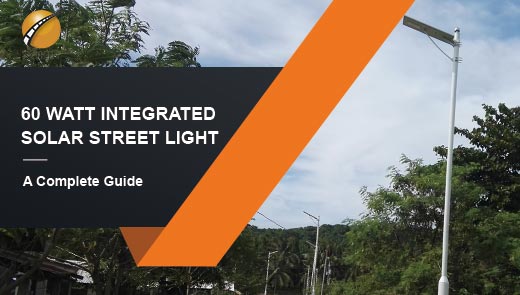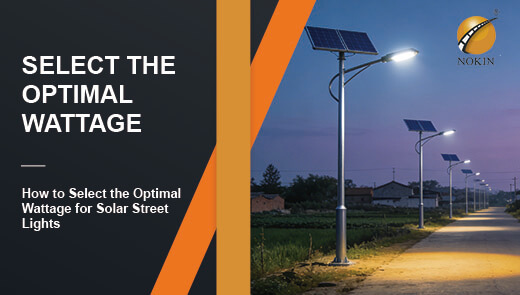How Many Types of Solar Street Lights Are There?
Jan 24, 2025
Solar street lights have become the preferred choice for outdoor lighting. They are environmentally friendly, energy-saving, and cost-effective and can provide stable and sustainable lighting for public spaces such as streets, parking lots, and parks. However, not all solar led street lights are the same. They not only have different appearances but also different performance characteristics. Understanding the different types of solar powered street lights can help you choose the option that best suits your needs.
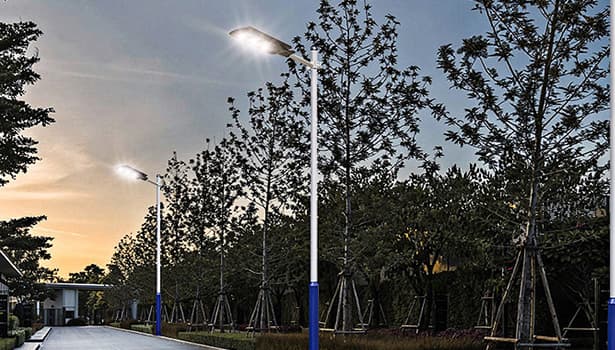
The design of integrating all components into one unit does not require separate wiring or components. It only needs to be fixed on the light pole, which greatly reduces the installation cost and time.
2. Energy saving and environmental protection
The all in one solar street light is completely powered by solar energy, does not require an external power supply, reduces dependence on traditional non-renewable energy, and truly achieves zero emissions.
3. Low maintenance cost
Since the integrated solar street lights adopt an integrated design, the exposed parts and the failure rate are reduced. At the same time, they use high-quality lithium batteries and LED light sources, which also reduce the frequency of replacement, thus reducing the cost and difficulty of maintenance.
4. More beautiful appearance
The integrated solar street lights have a simple design, high integration, and a neat and generous appearance, which can perfectly match a variety of environmental styles and increase the beauty of the environment.
5. Stronger adaptability
Due to their smaller size and easier installation, integrated solar street lights are more suitable for remote areas that need to be installed quickly and without grid coverage.
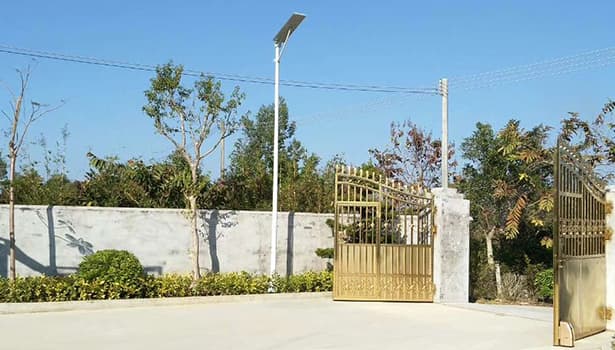
Since all components are concentrated together, the heat dissipation effect may not be as good as that of split street lights, which may affect the life of LEDs and batteries.
2. Limitation of solar panels
The area of solar panels is relatively small, and the power generation may not meet long-term lighting needs.
3. Limitation of energy storage capacity
The integrated design limits the volume of the battery, which may lead to insufficient power supply capacity on continuous rainy days or less sunshine in winter.
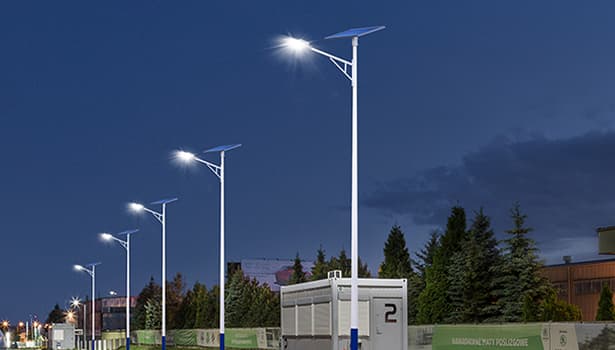
Since each component is installed separately, the angle and position of the solar panel can be adjusted according to the use requirements to maximize the absorption of sunlight and improve the power generation efficiency.
2. Good heat dissipation performance
Since the lamp head and battery are installed separately, the heat dissipation performance of the split solar street light is better than that of the integrated street light, and good heat dissipation also extends the service life of the lamp and battery.
3. Larger energy storage capacity
The split design allows the installation of larger capacity batteries to achieve sustainable lighting on continuous rainy days or short sunshine hours in winter.
4. Wide range of scenarios
Due to the high flexibility of the components, the split solar street light can meet different needs from low-power to high-power lighting, including urban main roads, highways, industrial parks, etc., where split solar street lights can be installed.
5. High power generation efficiency
The solar panel can be installed independently in a place with direct sunlight, and the lamp head can be installed at the optimal lighting height to improve the lighting effect.
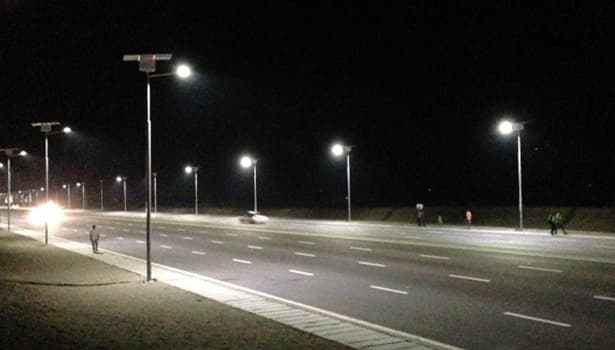
The initial cost of high-power split street lights is high, especially the cost of large-area solar panels and large-capacity batteries.
2. Relatively complex installation
Since each component is installed independently, additional wiring and more professional installation techniques are required, and the initial installation cost is high.
3. Maintenance work is more cumbersome
The components are scattered in different locations, and each part needs to be checked during regular maintenance, which is a large workload.
4. Easy to be stolen or damaged
The battery may need to be installed on the ground or buried underground, and there is a risk of theft or damage, especially in remote or unmonitored areas.
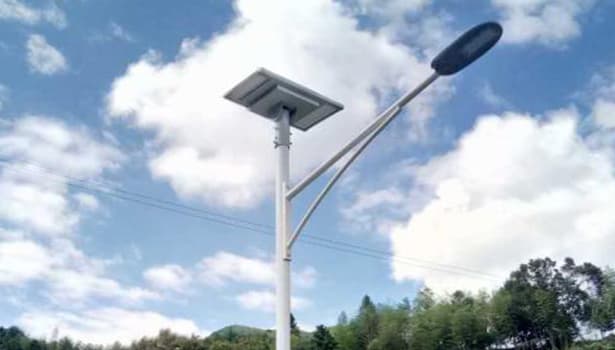
The semi-integrated design reduces the difficulty of integrated manufacturing, is more flexible than the integrated type, and has a lower initial cost than the split type.
2. Balanced performance
Compared with the integrated solar street light, it has higher energy efficiency and lighting performance and better heat dissipation performance; compared with the split type, it reduces the wiring requirements and reduces the difficulty of installation.
3. Meet the needs of various environments
It can not only meet the basic lighting needs of small areas but also adapt to scenes with higher requirements for battery life through larger capacity batteries.
Compared with the integrated solar street light, the installation still requires a small amount of wiring, which is relatively complex.
2. There is a certain risk of theft and damage
Since the battery needs to be installed externally, there is a certain risk of theft and damage.
3. Slightly poor weather resistance
The battery is installed independently, and additional protection measures such as waterproofing and dustproofing need to be considered; it may face environmental impacts during long-term operation.
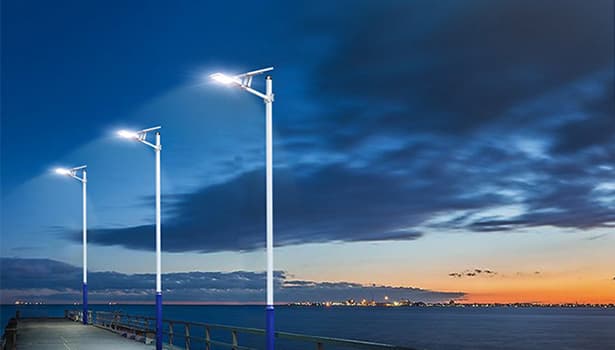
Solar street lights are an excellent choice for sustainable and energy-saving outdoor lighting. Understanding the differences between integrated, split, and semi-integrated solar powered street lights can help you make an informed decision that meets your needs. Whether you prioritize ease of installation, high performance, or a balance between the two, there is a solar street light solution for you.

What is an integrated solar street light?
Integrated solar street lights, also known as all in one solar street lights, integrate all components, including solar panels, batteries, light sources, and controllers, into one unit to form a compact lighting device.Advantages of integrated solar street lights
1. Easy installationThe design of integrating all components into one unit does not require separate wiring or components. It only needs to be fixed on the light pole, which greatly reduces the installation cost and time.
2. Energy saving and environmental protection
The all in one solar street light is completely powered by solar energy, does not require an external power supply, reduces dependence on traditional non-renewable energy, and truly achieves zero emissions.
3. Low maintenance cost
Since the integrated solar street lights adopt an integrated design, the exposed parts and the failure rate are reduced. At the same time, they use high-quality lithium batteries and LED light sources, which also reduce the frequency of replacement, thus reducing the cost and difficulty of maintenance.
4. More beautiful appearance
The integrated solar street lights have a simple design, high integration, and a neat and generous appearance, which can perfectly match a variety of environmental styles and increase the beauty of the environment.
5. Stronger adaptability
Due to their smaller size and easier installation, integrated solar street lights are more suitable for remote areas that need to be installed quickly and without grid coverage.

Disadvantages of integrated solar street lights
1. Poor heat dissipation performanceSince all components are concentrated together, the heat dissipation effect may not be as good as that of split street lights, which may affect the life of LEDs and batteries.
2. Limitation of solar panels
The area of solar panels is relatively small, and the power generation may not meet long-term lighting needs.
3. Limitation of energy storage capacity
The integrated design limits the volume of the battery, which may lead to insufficient power supply capacity on continuous rainy days or less sunshine in winter.
What is a split solar street light?
Split solar street lights are solar powered street lights with all components installed independently, including solar panels, LED light sources, batteries, and controllers. These components need to be connected through wiring, which has higher flexibility in design and installation.
Advantages of split solar street lights
1. High flexibilitySince each component is installed separately, the angle and position of the solar panel can be adjusted according to the use requirements to maximize the absorption of sunlight and improve the power generation efficiency.
2. Good heat dissipation performance
Since the lamp head and battery are installed separately, the heat dissipation performance of the split solar street light is better than that of the integrated street light, and good heat dissipation also extends the service life of the lamp and battery.
3. Larger energy storage capacity
The split design allows the installation of larger capacity batteries to achieve sustainable lighting on continuous rainy days or short sunshine hours in winter.
4. Wide range of scenarios
Due to the high flexibility of the components, the split solar street light can meet different needs from low-power to high-power lighting, including urban main roads, highways, industrial parks, etc., where split solar street lights can be installed.
5. High power generation efficiency
The solar panel can be installed independently in a place with direct sunlight, and the lamp head can be installed at the optimal lighting height to improve the lighting effect.

Disadvantages of split solar street lights
1. High costThe initial cost of high-power split street lights is high, especially the cost of large-area solar panels and large-capacity batteries.
2. Relatively complex installation
Since each component is installed independently, additional wiring and more professional installation techniques are required, and the initial installation cost is high.
3. Maintenance work is more cumbersome
The components are scattered in different locations, and each part needs to be checked during regular maintenance, which is a large workload.
4. Easy to be stolen or damaged
The battery may need to be installed on the ground or buried underground, and there is a risk of theft or damage, especially in remote or unmonitored areas.
What is a semi-integrated solar street light?
Semi-integrated solar street lights are between integrated and split types and are a relatively balanced design. It combines the LED lamp head and solar panel as a whole, but the battery and controller are usually installed separately. This design takes into account the convenience of integration and the flexibility of split type.
Advantages of semi-integrated solar street lights
1. Moderate costThe semi-integrated design reduces the difficulty of integrated manufacturing, is more flexible than the integrated type, and has a lower initial cost than the split type.
2. Balanced performance
Compared with the integrated solar street light, it has higher energy efficiency and lighting performance and better heat dissipation performance; compared with the split type, it reduces the wiring requirements and reduces the difficulty of installation.
3. Meet the needs of various environments
It can not only meet the basic lighting needs of small areas but also adapt to scenes with higher requirements for battery life through larger capacity batteries.
Disadvantages of semi-integrated solar street lights
1. Relatively complex installationCompared with the integrated solar street light, the installation still requires a small amount of wiring, which is relatively complex.
2. There is a certain risk of theft and damage
Since the battery needs to be installed externally, there is a certain risk of theft and damage.
3. Slightly poor weather resistance
The battery is installed independently, and additional protection measures such as waterproofing and dustproofing need to be considered; it may face environmental impacts during long-term operation.

Solar street lights are an excellent choice for sustainable and energy-saving outdoor lighting. Understanding the differences between integrated, split, and semi-integrated solar powered street lights can help you make an informed decision that meets your needs. Whether you prioritize ease of installation, high performance, or a balance between the two, there is a solar street light solution for you.

